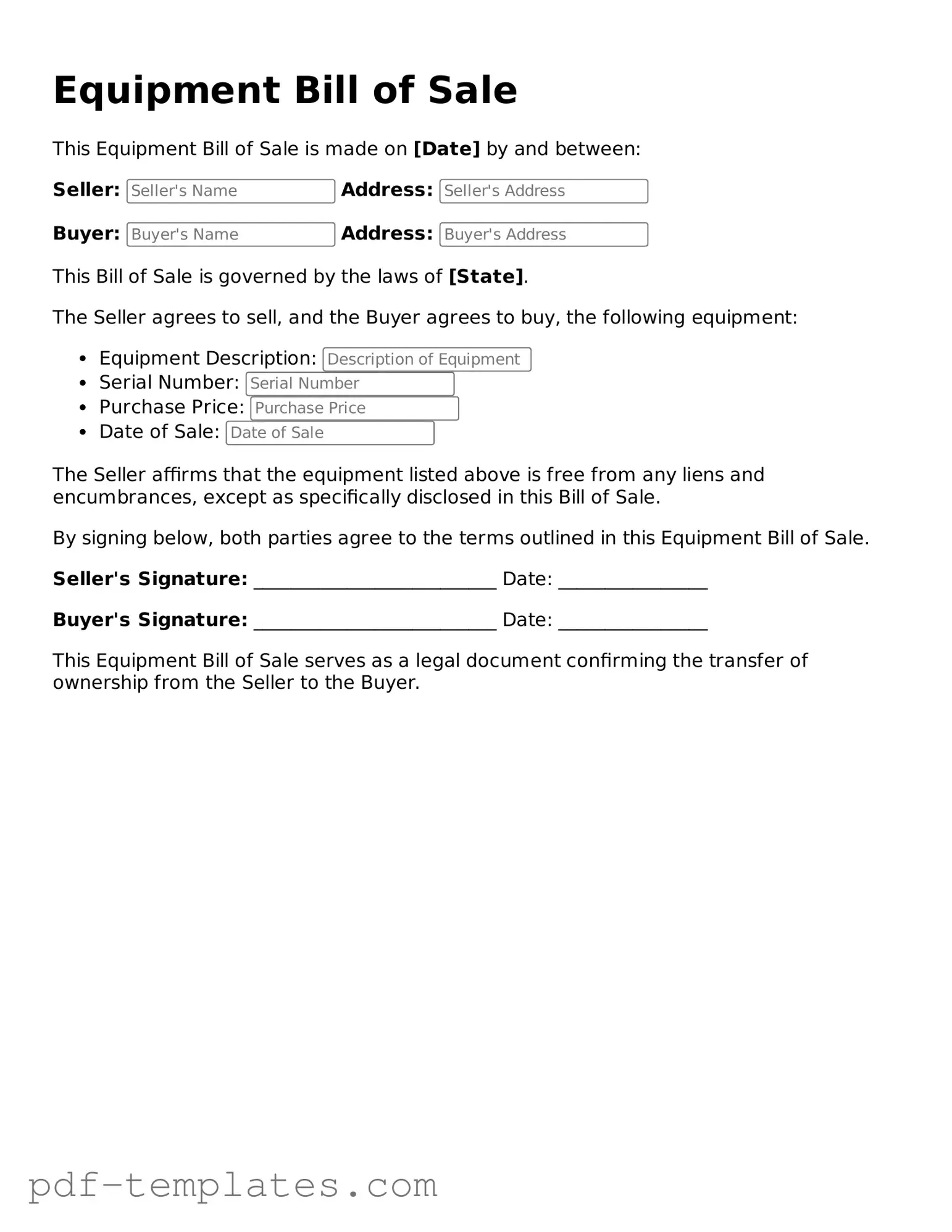An Equipment Bill of Sale form shares similarities with a Vehicle Bill of Sale. Both documents serve as proof of transfer of ownership from one party to another. They detail essential information, such as the buyer and seller's names, the description of the item being sold, and the sale price. Like the Equipment Bill of Sale, the Vehicle Bill of Sale also often includes information about the condition of the vehicle and any warranties or guarantees provided by the seller.
For those engaging in boat transactions, it's crucial to understand the role of the Louisiana Boat Bill of Sale form as it confirms the transfer of ownership, much like the importance of documentation in vehicle sales. Ensuring accurate completion of the form not only validates the purchase but also aids in the registration process. For further resources and templates, you can visit vehiclebillofsaleform.com/ to guide you through the steps necessary for a smooth transaction.
Another document that resembles the Equipment Bill of Sale is the Personal Property Bill of Sale. This form is used for the sale of personal items, which may include furniture, electronics, or collectibles. It outlines the terms of the sale, including the item description, sale price, and the names of both parties. Both documents aim to protect the interests of both the buyer and seller by providing a clear record of the transaction.
A Boat Bill of Sale is also quite similar to the Equipment Bill of Sale. This document specifically pertains to the sale of watercraft. Like the Equipment Bill of Sale, it includes information about the buyer and seller, the boat's details, and the agreed-upon sale price. Both forms serve to establish legal ownership and can be used for registration purposes with relevant authorities.
The Motorcycle Bill of Sale is another document that bears resemblance to the Equipment Bill of Sale. This form is specifically designed for the sale of motorcycles. It captures key details such as the motorcycle's make, model, and Vehicle Identification Number (VIN), along with the buyer and seller's information. Both forms provide a legal record of the transaction, ensuring that the buyer has proof of ownership and the seller has proof of the sale.
Lastly, the Real Estate Bill of Sale is comparable to the Equipment Bill of Sale, though it pertains to real property rather than personal property. This document is used when selling personal items that may be included in a real estate transaction, such as appliances or fixtures. It details the items being sold, the sale price, and the parties involved. Both documents emphasize the importance of clarity in ownership transfer, ensuring that all parties understand what is being sold and under what terms.
